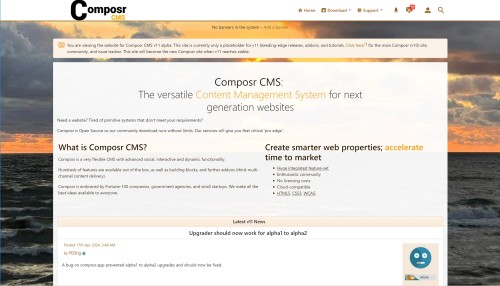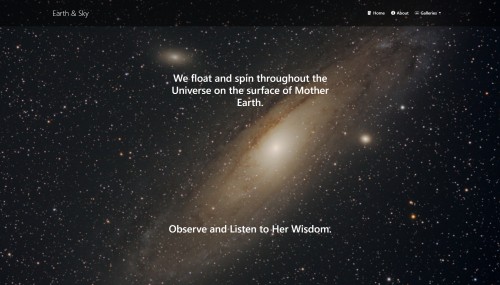Featured Sites: A-Z Index
H
Newest 10 Entries
| Question | Can I filter my search results? |
|---|---|
| Answer | Yes, you can filter your search results by:
|
| Question | What is the difference between natural and boolean searching? |
|---|---|
| Answer | Natural search is a more relaxed approach where you type in your search terms and Composr tries to find the most relevant results, even if they don't contain all the words. It's like a Google search. Boolean search requires more precision and uses operators like "+", "-", and quotation marks to define exactly what you're looking for. For example, searching for "+car -maintenance" will only return results that contain the word "car" but not "maintenance". |
| Question | How do I search my Composr website? |
|---|---|
| Answer | There are a few ways to search your Composr website:
|
| Question | How do I mark correct answers in a quiz? |
|---|---|
| Answer | For questions with predefined answers, you can mark correct answers by adding [*] after the answer. If no answer is marked correct, the question will require manual marking. You can also use the [UNMARKED] tag after a question to exclude it from scoring. |
| Question | What is the input syntax for quiz questions? |
|---|---|
| Answer | Quiz questions are inputted in blocks, separated by blank lines. The first line is the question, followed by potential answers on subsequent lines. Different question types are indicated by tags after the question, such as [MULTIPLECHOICE], [MULTIMULTIPLE], [LONG], [SHORT], and [SHORT_STRICT]. |
| Question | Can I create complex, multi-screen quiz interfaces in Composr? |
|---|---|
| Answer | While Composr's built-in quiz system is excellent for standard formats, creating intricate multi-screen quizzes might require custom development using Composr's decision tree framework or other programming tools. This allows for highly customized quiz structures and advanced branching logic. |
| Question | How can I analyze quiz results effectively? |
|---|---|
| Answer | Composr enables you to export quiz results to a spreadsheet file, facilitating in-depth data analysis. This is especially useful for manually marked questions, identifying competition winners, and processing data for marketing or research purposes. |
| Question | What are Quiz Sets and how can I use them? |
|---|---|
| Answer | Quiz Sets are a helpful organizational feature in Composr. By prefixing quiz names with "Example: ", you can group related quizzes together. This allows for combined scoring and percentage calculations, particularly beneficial for multi-part questionnaires or tests. |
| Question | How does scoring work for quizzes with different question types? |
|---|---|
| Answer |
|
| Question | Can I reward users for completing quizzes? |
|---|---|
| Answer | Yes, you can reward users with points for successfully passing a test. This incentivizes participation and encourages users to engage with your content. |
Top 10 Entries
| Question | How Do Gallery Slide-shows Work? |
|---|---|
| Answer | When viewing an image or video in a gallery, visitors can initiate a slide-show that automatically cycles through subsequent entries. The slide-show can be paused with a click or keypress. The default slide-show speed can be adjusted by modifying the GALLERY_ENTRY_SCREEN.tpl template. |
| Question | What are Watermarks and How Do They Work? |
|---|---|
| Answer | Watermarks are semi-transparent images overlaid on gallery images to mark their origin or deter unauthorized use. When you add or edit a gallery, you can choose to apply watermarks to the corners of images. Watermarking applies permanently to the uploaded image. Composr uses a reverse tree structure for watermarks: if a sub-gallery doesn't have a watermark defined, it inherits the watermark from its parent gallery. |
| Question | Can Members Create Their Own Personal Galleries? |
|---|---|
| Answer | Yes, members with the "have personal galleries" permission can create their own galleries. These personal galleries are displayed under designated "Personal category container" galleries. They also show up in a tab on the member's profile. Members can only add content to their own galleries unless they have the "Submit to categories belonging to other members" permission. |
| Question | What are Rep-Images and How Do I Set Them? |
|---|---|
| Answer | Rep-images, short for "representative images," are thumbnails that represent a gallery when it's displayed within a list of galleries. They offer a visual preview of the gallery's contents. You can set a rep-image when adding or editing a gallery, or when adding an image to a gallery. |
| Question | How Do I Import Images in bulk into a Gallery? |
|---|---|
| Answer | You can import images in bulk using a CSV file. The file should be named descriptions.csv and placed in the uploads/galleries directory. The first column should contain filenames (without the path), and the second column should contain descriptions. The filenames should correspond to images also located in the uploads/galleries directory. Composr will automatically match the descriptions to the images during import. |
| Question | What Image and Video Formats are Supported? |
|---|---|
| Answer | Images:
Videos:
Other formats, while they may work, are generally discouraged due to compatibility issues and lack of consistent addon or browser support. |
| Question | What are Composr Galleries? |
|---|---|
| Answer | Composr Galleries are a system for storing, organizing, and displaying images and videos. They function like categories, allowing you to group related media together. Galleries can be structured hierarchically, with sub-galleries nested under parent galleries, similar to a folder system. Each gallery has settings that control its appearance and behavior. |
| Question | How are forums structured in Composr? |
|---|---|
| Answer | Composr forums are organized hierarchically:
|
| Question | How do I debug email integration issues? |
|---|---|
| Answer |
|
| Question | How can I control who can post in my forums? |
|---|---|
| Answer | You can manage posting permissions using Composr's usergroup system.
|





